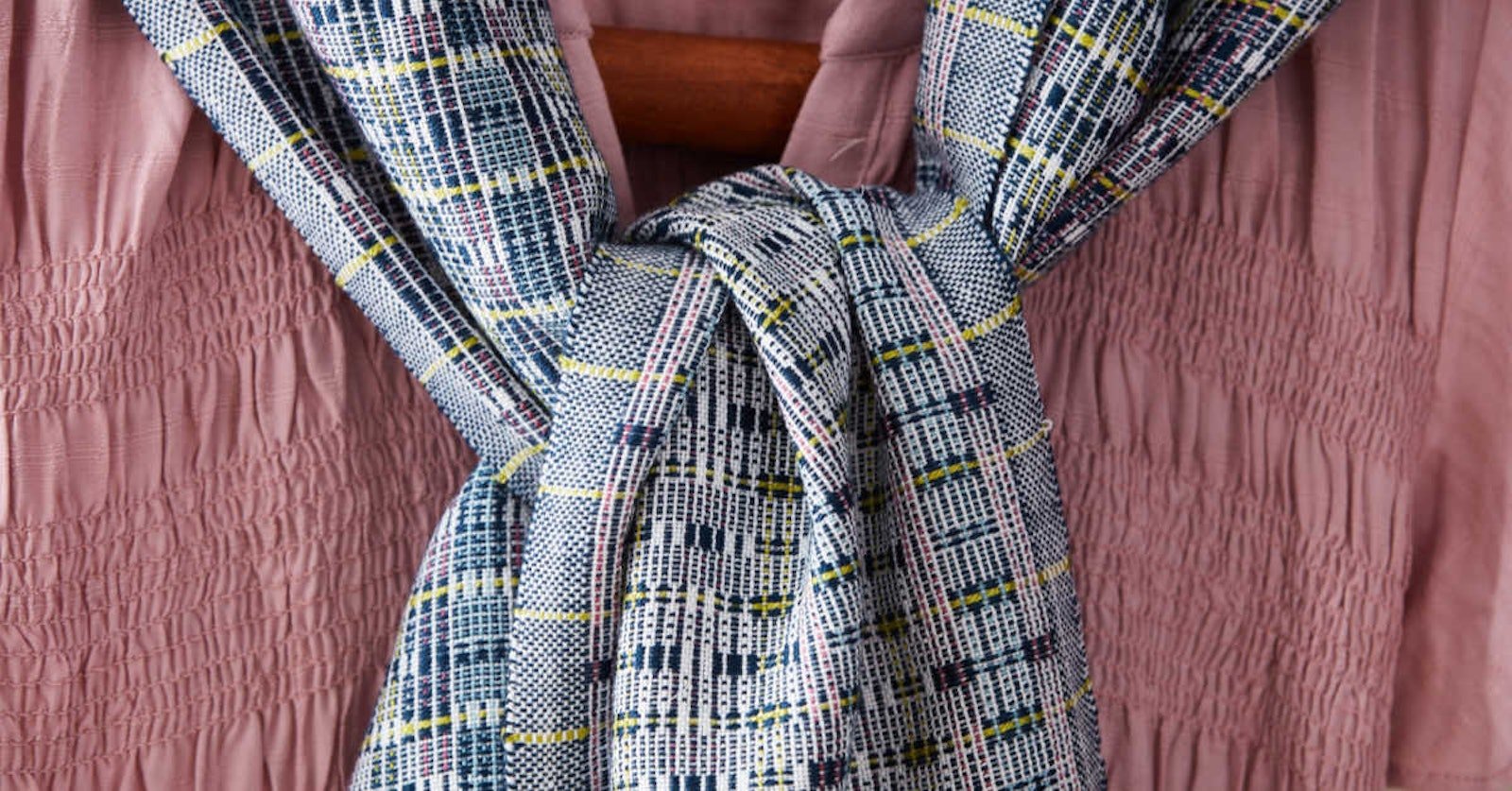Dr. William Bateman was a fascinating man. After retiring from his job as a professor of chemistry, William turned his eye—and his scientifically inclined mind—to the world of weaving. His woven experiments led to several new weave structures, including the Bateman Park weave, which Deborah Heyman chose to explore in her gorgeous Playing in the (Bateman) Park Scarf for the March/April 2019 issue of Handwoven. Here’s what Deborah had to say about her design:
Deborah Heyman’s thoroughly modern scarf, inspired by the works (and weavings) of Dr. William Bateman.
Designer Deborah Heyman’s Statement
My weave structures study group has been focusing on Bateman weaves this past year. Dr. Bateman was a retired scientist who developed a number of block-weave threading systems divided into categories such as the evocatively named “Park” and “Boulevard.” One of the things my group surmised is that Dr. Bateman may have been more concerned with permutations than with practicality! Many of the structures that result from his threading patterns have long floats on the back, confining their use to items such as pillows, where those floats are safely enclosed. Luckily, this shawl pattern does not have long floats and, in fact, the contrasting pattern on the back adds visual interest.
The tabby shots can dilute the clarity of the pattern, so I used a thin 20/2 cotton for my tabby that would be barely visible. From my sampling, I found that the warp ends on shaft 1 (the “tie-down” shaft ) tended to rise up onto the surface of the cloth instead of staying neatly embedded in the web. This was more pronounced closer to the selvedges, so I added a plain-weave border to mitigate the problem.
Happy Weaving!
Christina
Project at a Glance
PROJECT TYPE: 8-shaft.
STRUCTURE: Bateman Park weave.
EQUIPMENT: 8-shaft loom, 14" weaving width; 12-dent reed; 3 shuttles; 3 bobbins.
YARNS: 8/2 Tencel (100% lyocell; 3,360 yd/lb; Camilla Valley Farm); 20/2 cotton (8,400 yd/lb; UKI).


